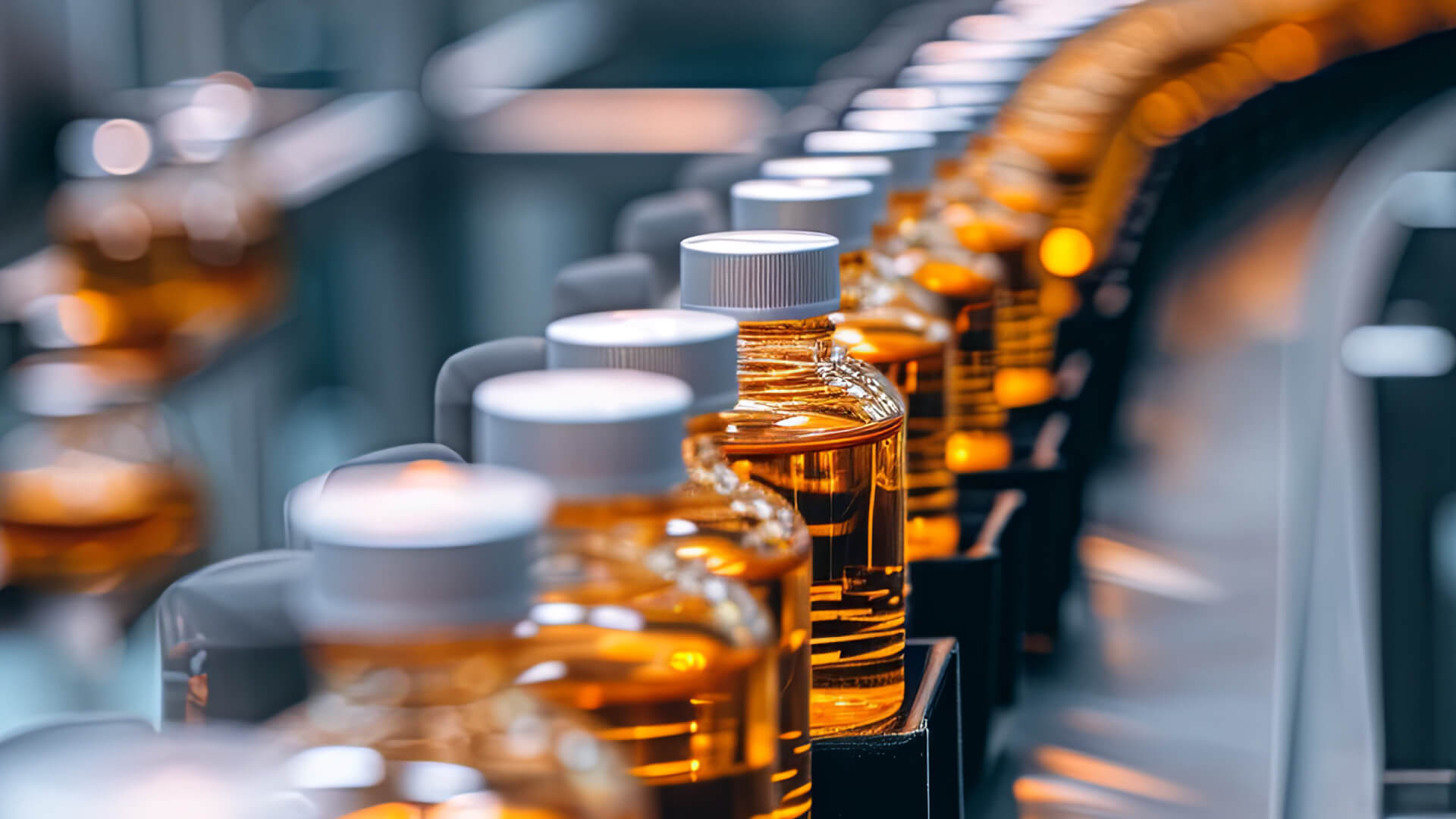
In the life sciences, compliance is everything, and two of the most critical regulations are Good Manufacturing Practices (GMP) and Good Distribution Practice (GDP).
While they share a common goal of ensuring medicines are safe and effective, they apply to very different parts of the supply chain. GMP focuses on how products are made, while GDP ensures they are stored and distributed correctly. Both are essential, but they are often confused or used interchangeably.
This matters not just for manufacturers and QA professionals, but also for logistics providers, warehouse managers, and regulators working to protect patient safety and product integrity.
Understanding the differences—and where GMP and GDP overlap—is key to staying compliant, audit-ready, and trustworthy in the eyes of health authorities.
In this post, we will break down what sets GMP and GDP apart, why each matters, and how the two work together to ensure quality from production to delivery.
What are Good Manufacturing Practices (GMP)?
Good Manufacturing Practices (GMP) are regulations and guidelines set by governments that ensure the quality, safety, and efficacy of pharmaceuticals, active substances, medical devices, food, and other healthcare products.
GMP establishes the minimum requirements that manufacturers must follow. It ensures that products are consistently produced, processed, controlled, stored, and packaged according to strict quality standards, meeting specific requirements for identity, strength, quality, and purity.
These standards are designed to make sure that every product meets its intended use and complies with government regulations and product specifications.
In short, GMP is a set of rules to make sure products are safe and high quality—but of course, explaining it takes longer than actually saying: Make good drugs and devices the right way.
What are current Good Manufacturing Practices (cGMP)?
Current Good Manufacturing Practices (cGMPs) are FDA regulations that establish the minimum best practices for the design, manufacture, processing, packaging, and storage of drug products and medical devices intended for human use. These practices ensure that these products are consistently safe, effective, and of high quality, meeting their intended use and product specifications.
Manufacturers are free to adopt innovative technologies and practices tailored to their operations, provided these innovations meet or exceed the baseline criteria for product integrity and regulatory compliance.
In the US, these practices are codified in the Code of Federal Regulations (CFR), primarily under 21 CFR Part 210 and Part 211, for finished pharmaceuticals, and under 21 CFR Part 820 for medical devices.
In the EU, these practices are codified under the rules of Eudralex Volume 4.
GMP vs cGMP: What's the real difference?
The fundamental difference between GMP and cGMP is the emphasis on flexibility and adaptability of the "current" standards.
While Good Manufacturing Practices (GMP) establish the core, baseline principles for quality manufacturing, current Good Manufacturing Practices (cGMP) mandate that manufacturers use the most recent methods and systems for continual improvement. The products must be designed and manufactured with the latest state-of-the-art technologies to achieve better quality in the most efficient way possible and lower risks.
What do GMP and cGMP involve?
cGMP and GMP govern the manufacture of pharmaceuticals and medical devices throughout their entire lifecycle. To keep it simple, they ensure that products are made correctly right first time.
They focus on five key areas, known as the Five Ps: Products, Processes, Premises, People, and Procedures.
Products
GMP/cGMP mandates rigorous control over raw materials and finished products. Each product must conform to a master formula, a precise formulation that dictates the composition and characteristics of the product.
For instance, in pharmaceutical manufacturing, a master formula would specify the exact quantities and types of active pharmaceutical ingredients (APIs) and excipients.
Quality Assurance (QA) systems must be implemented to conduct regular testing and comparative analyses, verifying adherence to defined specifications at each production stage. This ensures, for example, that a tablet’s dissolution rate or a solution’s concentration meets predetermined standards.
People
The efficacy of GMP relies on the competence and adherence of personnel to established protocols. Comprehensive training programs are essential, covering sanitation, documentation, labeling, and equipment operation.
For example, personnel handling sterile products must undergo specialized training in aseptic techniques.
Regular performance assessments and evaluations are crucial to maintain competency and ensure that all personnel understand and fulfill their roles within the manufacturing process.
This ensures that a laboratory technician, for example, is fully qualified to perform analytical testing procedures.
Processes
Manufacturing processes must be meticulously documented and validated to ensure consistency and reproducibility.
Auditors conduct regular inspections to verify compliance with established protocols. For instance, a validated sterilization process might involve documenting temperature, pressure, and time parameters to ensure effective microbial inactivation.
Manufacturers should establish a comprehensive documentation framework, providing all personnel with clear process specifications. This ensures that every step of the manufacturing process, from raw material handling to final packaging, is precisely controlled.
Procedures
Standard Operating Procedures (SOPs) and Work Instructions (WIs) serve as detailed guidelines for executing manufacturing processes. These procedures must be regularly updated to reflect current best practices and technological advancements.
For example, an SOP for equipment calibration would detail the frequency, methods, and acceptance criteria for calibration activities.
Using outdated technology or procedures can compromise compliance. Therefore, personnel must possess a thorough understanding of the procedures they are required to follow. This ensures that, for instance, a quality control analyst follows the correct procedures for sample analysis.
Premises
The condition of manufacturing facilities, laboratories, and equipment is critical for ensuring product quality. Adequate maintenance, cleanliness, and a robust repair system are essential.
For instance, a cleanroom environment must maintain specified temperature, humidity, and particulate levels to prevent contamination. Regular equipment calibration and preventative maintenance, such as filter replacements on HVAC systems, are necessary to ensure consistent performance and minimize the risk of product variations.
This ensures patient safety and customer confidence by maintaining a controlled and reliable manufacturing environment.
Recommended learning: Read our comprehensive guide on the 5 main components of GMP!
What is Good Distribution Practice (GDP)?
Good Distribution Practice (GDP) is the set of rules that every wholesale distributor must follow to guarantee that medicines maintain their quality and integrity as they move through the supply chain.
In the United States, GDP is enforced through the FDA’s Drug Supply Chain Security Act (DSCSA), which focuses on tracking and tracing pharmaceuticals at every step o¡f the supply chain.
In the European Union, GDP is mandated by Directives 2001/83/EC, along with detailed European Commission guidelines. To operate, distributors need a Wholesale Distribution Authorization (WDA) from their national authorities and must have robust quality management systems, documentation practices, and security measures in place. The European Medicines Agency (EMA) plays a central role in harmonizing GDP inspections across EU countries.
What does GDP involve?
The journey of pharmaceutical products involves a complex network of individuals and organizations, all playing a role in handling, storing, and distributing these vital products.
However, this intricate supply chain is vulnerable to risks at every turn. From purchasing and storage to repackaging, relabeling, transportation, and final distribution, there are potential pitfalls.
The most alarming threats are the falsification of medicines and the distribution of substandard products. These pose a severe risk to public health, potentially leading to ineffective treatment or even harm to patients.
Therefore, it's absolutely critical to safeguard the supply chain and prevent these dangerous products from reaching consumers.
Good Distribution Practice (GDP) provides the essential quality framework for drug products and medical devices, ensuring the integrity of medicines throughout their entire journey from manufacturers to the people who rely on them.
GDP involves several key areas:
- Storage conditions: GDP places a strong emphasis on maintaining appropriate storage conditions to preserve product quality, including temperature, humidity, and cleanliness within storage facilities.
- Transportation practices: GDP also governs the transportation of pharmaceutical products during transit, including the use of cold chain management for temperature-sensitive products.
- Documentation and traceability: GDP places fundamental importance on accurate documentation and traceability. This necessitates detailed records encompassing all stages of the distribution process, including procurement, storage, transportation, and delivery, to guarantee accountability and facilitate effective audits and recalls.
- Quality Management Systems: GDP emphasizes the implementation of robust quality management systems. These systems focus on risk monitoring, contamination prevention, and adherence to regulatory requirements.
- Handling procedures: GDP outlines proper handling procedures to prevent damage, mix-ups, or contamination of pharmaceutical products.
- Recall and return process: GDP includes effective processes for managing product recalls and the handling of returned products.
Where do GMP, cGMP, and GDP overlap?
While it is clear that GMP, cGMP, and GDP have distinct focuses, they are all vital components of GxP compliance. They overlap in areas where maintaining the quality, safety, and traceability of pharmaceutical products is critical.

In fact, their roles are not completely separate; there are key areas where they work together.
Here's how they overlap:
- Quality Management and Regulatory Compliance: Both GMP/cGMP (Eudralex Volume 4 & 21 CFR Part 211) and GDP (aligned with Directive 2001/83/EC) rely on robust quality management systems and regulatory compliance to ensure drug safety. However, their focus differs: GMP/cGMP controls manufacturing processes, including the approval/rejection of components and finished products by a quality control unit, while GDP maintains product integrity during distribution through quality assurance across the supply chain. Ultimately, GMP/cGMP governs manufacturing, and GDP governs distribution.
- Documentation and record-keeping: Both GMP/cGMP and GDP recognize that detailed and accurate documentation is essential.
- GMP/cGMP focuses on capturing the product's story within the manufacturing process: meticulous records of production, laboratory tests, and even how the product is distributed from the factory.
- GDP then picks up that story and continues it through the wider distribution network, emphasizing documentation that proves traceability and verifies proper handling.
- In essence, documentation tracks the product from raw materials (GMP/cGMP) to the final user (GDP), detailing all handling, deviations, and corrective actions.
- Storage and handling: Both GMP/cGMP and GDP recognize that simply manufacturing a quality product isn't enough; you have to keep its quality. GMP/cGMP focuses on controlling environmental conditions during manufacturing, whereas GDP extends this control, ensuring those conditions are maintained during storage and transport. To achieve this, both GMP/cGMP and GDP require robust monitoring systems to prevent product degradation. It's about protecting the medicine from start to finish.
- Personnel: Both GMP/cGMP and GDP emphasize the importance of the competence and diligence of qualified and well-trained personnel. In manufacturing (GMP/cGMP), this means employees must possess the specialized knowledge and skills to operate complex equipment, follow procedures, and ensure product quality. In distribution (GDP), personnel require expertise in handling medicines safely, maintaining storage conditions, and preventing contamination during transport. Hygiene and contamination prevention are essential in both production and storage facilities. This involves written personal hygiene practices, cleaning and disinfection protocols, and facility design and airflow to minimize contamination risks.
- Risk management and audits: GMP/cGMP and GDP emphasize the importance of proactive risk management. Companies must conduct thorough risk assessments to identify and mitigate potential threats to product quality and safety. GMP/cGMP focuses on risks within the manufacturing process, including equipment validation and process control, while GDP addresses risks in the distribution network, such as improper storage or transportation conditions. This includes preventing contamination and protecting products from falsification, tampering, and counterfeits. To ensure compliance with these regulations, regulatory agencies conduct rigorous inspections of both GMP/cGMP and GDP facilities. These inspections verify that companies are adhering to the established standards and implementing effective risk management strategies.

GMP/cGMP vs GDP: Key differences
While GMP/cGMP and GDP are interrelated, they also differ in several key areas.
In terms of personal roles, GMP/cGMP introduces the role of the Qualified Person (QP), who is responsible for certifying the release of batches of product.
GDP, however, features a Responsible Person (RP), who oversees compliance with distribution standards, but is not authorized to release and certify batches.
One particularly distinct aspect of GDP is its guidance on brokers, those who facilitate the buying, selling, or arranging of pharmaceutical products in the supply chain without ever physically handling them. While brokers may never touch a product, their role in the supply chain is significant, and under GDP, they must be properly vetted, approved, registered, and monitored.
This ensures traceability, accountability, and compliance throughout the distribution network, even in the less visible parts of the chain. GMP/cGMP, by contrast, does not provide specific provisions for brokers because their activities fall outside the scope of manufacturing.
The differences between GMP/cGMP and GDP become even more apparent when you consider the areas they regulate. GMP/cGMP requires strict documentation of every step in the manufacturing process. GDP, conversely, focuses its documentation on storage temperatures, transportation routes, delivery confirmations, and personnel training in logistics operations.
Operations under GMP/cGMP are tightly controlled with standard operating procedures that must be followed precisely to ensure reproducibility and quality. GDP operations, while also rigorous, are centered more on supply chain traceability, identifying and preventing counterfeit products, managing export procedures, and vetting both suppliers and clients to ensure secure transactions.
The benefits of adherence to GMP/cGMP and GDP
Life sciences professionals usually associate GMP, cGMP, or GDP with checklists, inspections, and a mountain of paperwork. But for quality assurance professionals, it means more than rules and regulations.
GMP/cGMP and GDP are what keep the chaos in check. They are the reason QA staff sleep at night (well, sometimes).
By following GMP/cGMP and GDP, QAs not only avoid warning letters but also ensure that every pill, vial, and box leaves our facility in good condition. No mystery ingredients, no surprise side effects, no panic recalls on a Friday afternoon.
And yes, sometimes it feels like they are the fun police, always asking for another document, a cleaner logbook, or reminding everyone for the hundredth time to "write it down if it didn’t happen."
But here’s the thing: GMP/cGMP and GDP make QAs the unsung heroes of the pharmaceutical world.
Key takeaways
- GMP/cGMP ensures your products are made right, while GDP makes sure they’re handled and delivered the right way. Together, they form the perfect duo in the pharmaceutical world, ensuring everything from production to delivery is safe, effective, and high-quality.
- Both GMP/cGMP and GDP require strict documentation and traceability to maintain accountability throughout the product life cycle, ensuring that every step is accounted for and that the product stays in peak condition.
- People make the difference. From lab technicians to logistics experts, GMP/cGMP and GDP are only as good as the people behind them. Both require highly trained personnel who know exactly how to handle products, prevent contamination, and keep everything up to standard.
Conclusion
GMP/cGMP and GDP are the key regulations that protect patients and guarantee that every product, from manufacturing to distribution, remains high-quality.
While compliance is essential, it doesn't have to be a burden. In fact, it can be a significant competitive differentiator.
How about considering GMP/cGMP and GDP as opportunities rather than barriers in the life sciences?
We invite you to explore our Scilife GMP use case and GDP use case to see firsthand how we have helped companies like yours achieve seamless compliance. These real-world examples demonstrate how we turn complex regulations into actionable solutions, ensuring products are made and delivered the right way, every time.
At Scilife, we are more than just a compliance partner, we are here to help you elevate your manufacturing and distribution processes. With our expertise, cutting-edge tools, and tailored strategies, we can ensure your products are always audit-ready and in full regulatory compliance.










